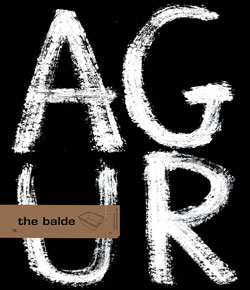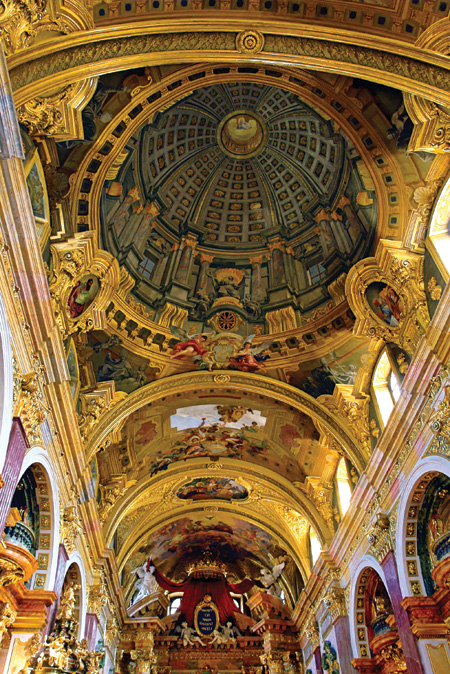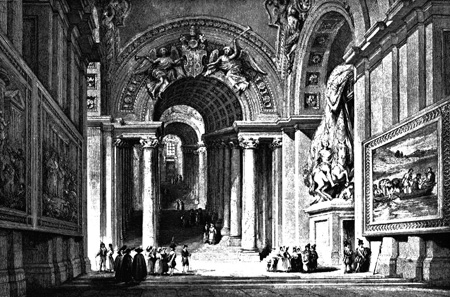trompe-l'œil: Without 3D glasses
For those the balde readers who think that all this hullabaloo surrounding 3D is because it is a new technique, we have a wonderful new word for you: Trompe-l'œil. And no, it has absolutely nothing to do with trunks or horns. It’s a technique for creating a space where there is none, a form of optical illusion that fools the eye. The word, in French, literally means “the misleading of the eye”.
Starting with the frescoes at Pompey, moving through the different periods of religious art down to the cinema backdrops and decoration of today, trompe-l'œil is a difficult and exact painting technique that has been used throughout history. Generally, trompe-l'œil is and has normally been used on realist mural paintings. It is used to create a false perspective. Using a specific painting technique that focuses on perspective, the artist tricks the eyes and achieves the optical effect of depth in their work. The end result is basically a 3D effect without the glasses. This technique has mainly been used in painting but there are notable examples to be found in architecture. There is Gianluca Bernini’s Scala Regia at the Vatican or Borromini’s Galeria Spada built in the Palazzo Spada. The perception of space is altered architectonically. Through varying the heights of columns, a much more notable depth is achieved.
Starting with the frescoes at Pompey, moving through the different periods of religious art down to the cinema backdrops and decoration of today, trompe-l'œil is a difficult and exact painting technique that has been used throughout history. Generally, trompe-l'œil is and has normally been used on realist mural paintings. It is used to create a false perspective. Using a specific painting technique that focuses on perspective, the artist tricks the eyes and achieves the optical effect of depth in their work. The end result is basically a 3D effect without the glasses. This technique has mainly been used in painting but there are notable examples to be found in architecture. There is Gianluca Bernini’s Scala Regia at the Vatican or Borromini’s Galeria Spada built in the Palazzo Spada. The perception of space is altered architectonically. Through varying the heights of columns, a much more notable depth is achieved.




